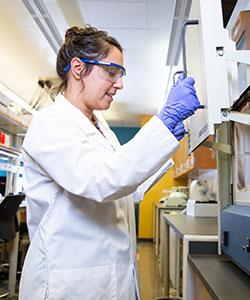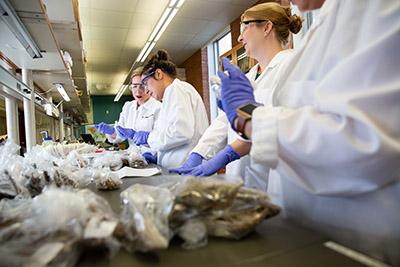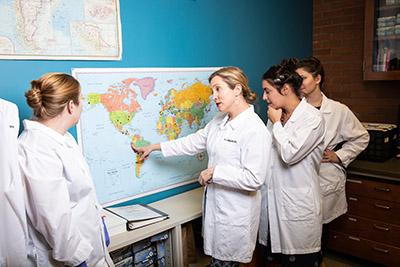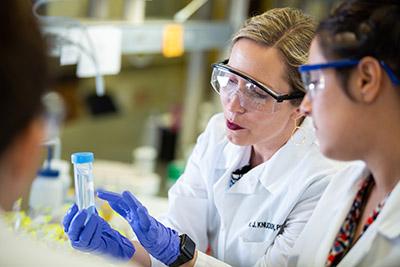The Archaeological Chemistry Laboratory (ACL) is dedicated to preparing archaeological and bioarchaeological samples for isotopic and elemental analysis. Since the ACL was founded in 2006, more than 10,000 enamel, bone, hair, textiles, water, and soil samples have been prepared and analyzed using biogeochemical techniques to answer anthropological questions. Our facilities include a freeze-dryer for preparing collagen samples, Millipore Direct-Q system that provides ultrapure water, drying oven, furnace, fume hood, microscopes, balances, standard laboratory supplies, and ample bench and desk space for students and visiting researchers.
Location: Room 303, School of Human Evolution and Social Change Building
Research
Much of the research in the ACL focuses on isotopic indicators of paleodiet and paleomobility, particularly in the Andes. We also collaborate on archaeological projects around the world. Finally, we develop new biogeochemical methods and refine existing ones for archaeological and forensic applications.
People
Faculty:
Professor Kelly J. Knudson
Graduate Students:
More than 50 graduate students have received training in the use of biogeochemistry in archaeology and bioarchaeology in the ACL. Students participate in every research stage, from sample preparation and analysis to publication and public outreach. This includes hands-on experience with mass spectrometers in the Metals, Environmental and Terrestrial Analytical Laboratory (METAL) at ASU. Seventeen dissertation projects, both with ASU students and students from other institutions, have been completed using the ACL, with a number of additional dissertation projects underway.
Undergraduate Students:
More than 85 undergraduate students have been trained in the ACL, mostly as undergraduate research apprentices who receive course credit for their work. To join our laboratory as an undergraduate, please apply to the School of Human Evolution and Social Change Research Apprenticeship Program.
Publications
More than 100 peer-reviewed publications have ultimately come from the ACL. Many are available here.




